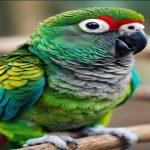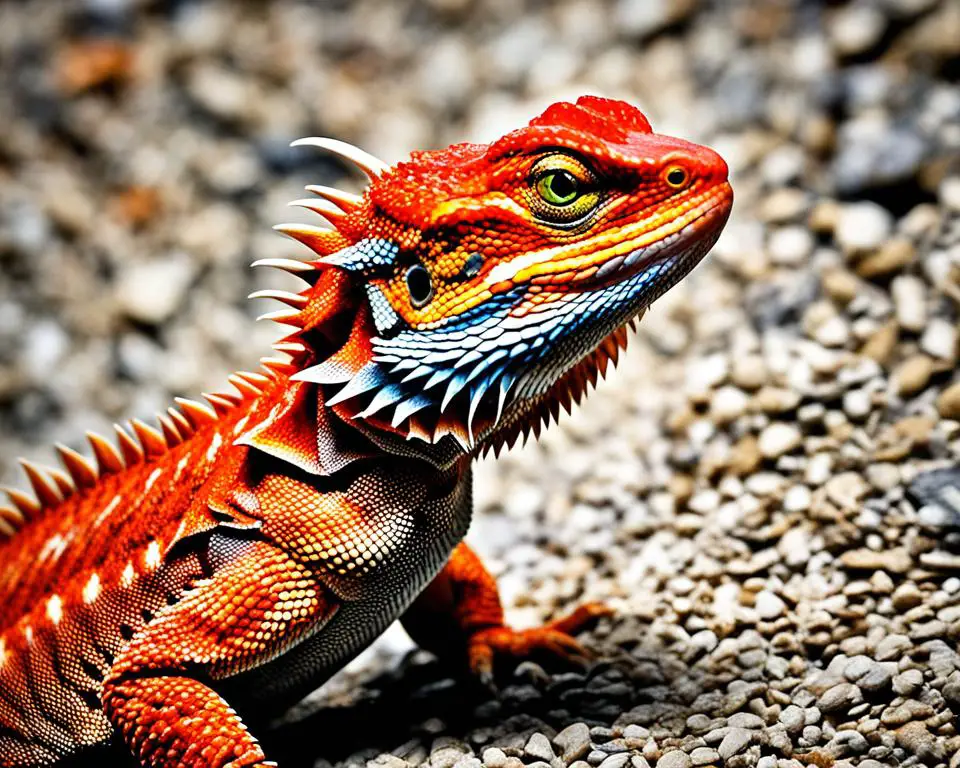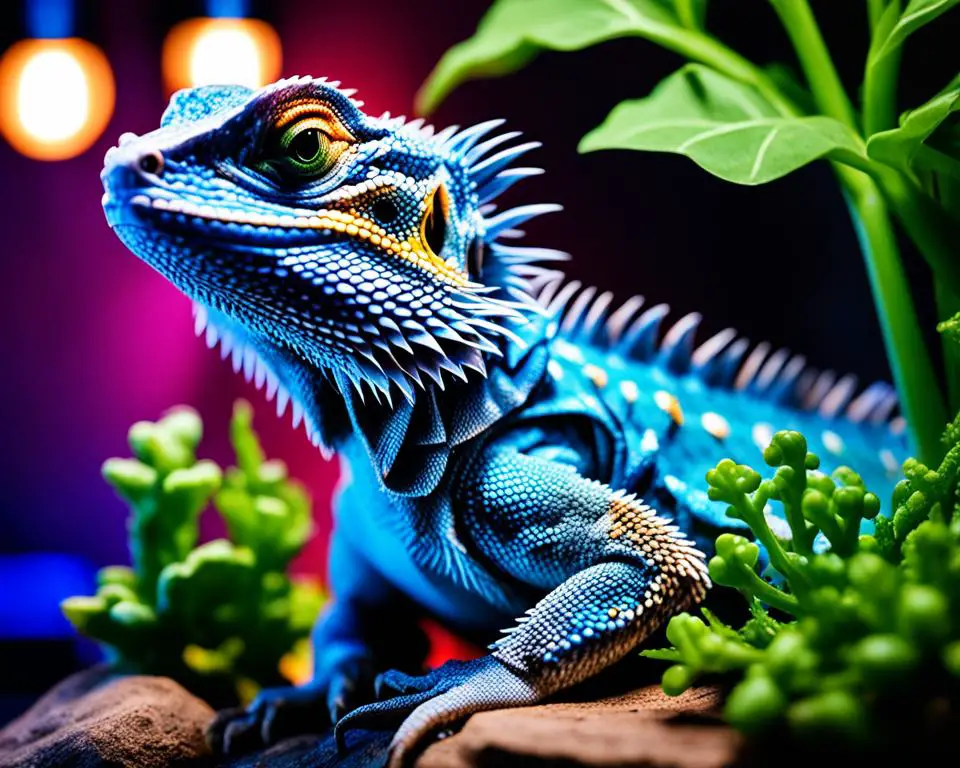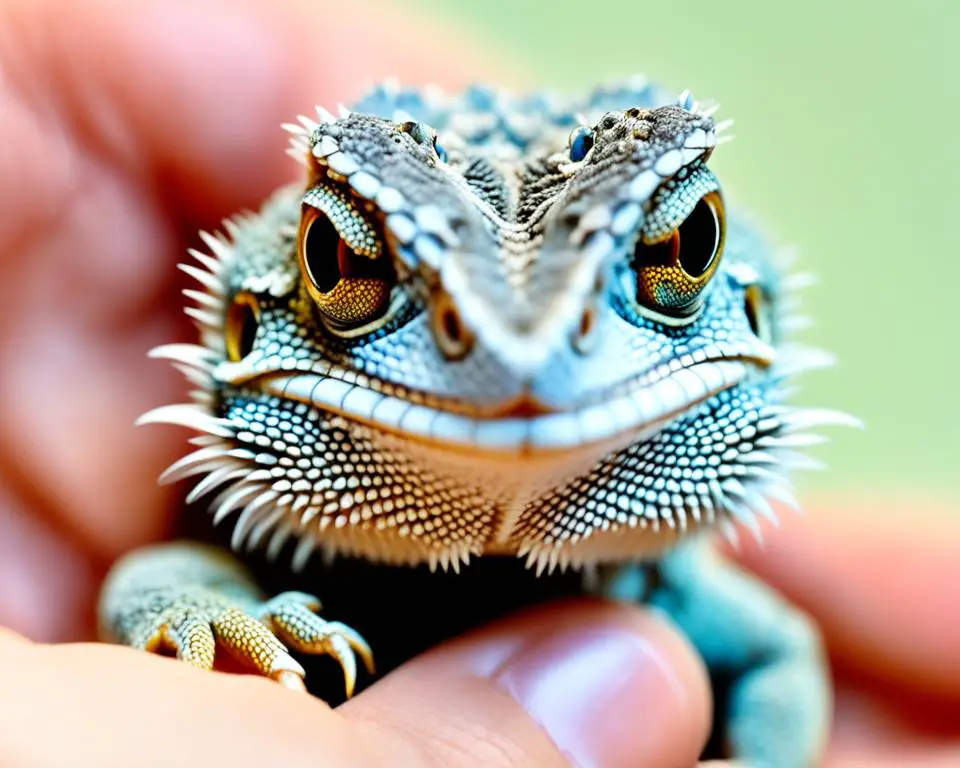As a bearded dragon owner, you want to ensure that your scaly friend is healthy and happy, and proper lighting is crucial in achieving that goal. But with so many options out there, it can be overwhelming to figure out what kind of lighting your bearded dragon needs.
That’s where we come in – in this guide, we’ll cover everything you need to know about bearded dragon lighting, from the different types of bulbs to the ideal lighting setup for your dragon’s enclosure. So sit back, relax, and get ready to become a lighting expert for your beloved bearded dragon!
Key Takeaways
- Bearded dragons need heat lamps for basking and UVB lamps for calcium absorption, with UVB lights on for 10-12 hours daily.
- Various bulb types, like halogen, fluorescent, and mercury vapor, serve distinct roles, such as temperature regulation and simulating sunlight.
- A temperature gradient with a basking spot of 100-110°F is vital, and bulbs should be replaced every 6-12 months.
- Avoid the primary use of red lights and maintain consistent light-dark cycles for healthy circadian rhythms.
Are red lights bad for bearded dragons?
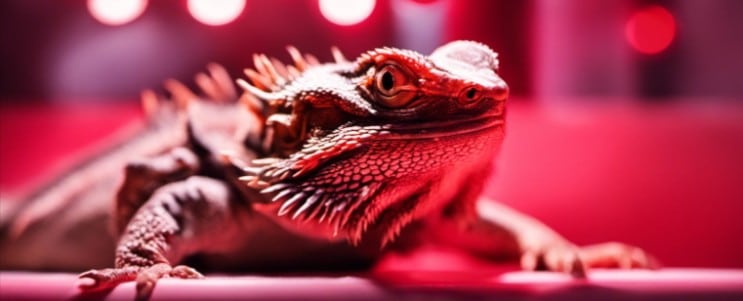
Red lights are not necessarily bad for bearded dragons but can disrupt their sleep cycle if used at night. Bearded dragons need a period of darkness to regulate their circadian rhythms and promote healthy sleep.
If you need to observe them at night, using a low-wattage red or blue light is recommended, as these colors do not disturb their sleep cycle.
However, it is essential to note that these lights should not be used as a primary source of heat or UVB for bearded dragons, as they do not provide the necessary light spectrum for their overall health and well-being.
What type of lighting do bearded dragons need?
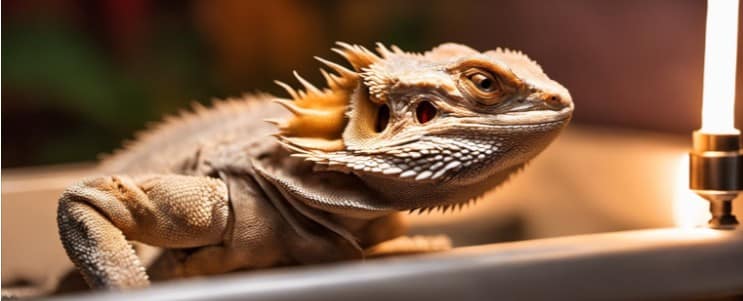
The primary lights needed are a heat lamp for basking and a UVB fluorescent tube fixture. UVB lighting is crucial as it aids in vitamin D3 synthesis, which in turn helps with calcium absorption, essential for bone health.
Also, bright, white light is vital for their energy, appetite, and mental health. It’s important to note that bearded dragons do not require UVA or UVB exposure at night; hence, both the heat lamp and UVB light should be turned off during this time to mimic a natural day/night cycle.
When setting up lighting, it’s essential to consider the vivarium’s height and choose the appropriate UVB output. Proper lighting not only ensures the physical health of the bearded dragon but also helps regulate their circadian rhythm and overall behavior.
Do bearded dragons need light at night?
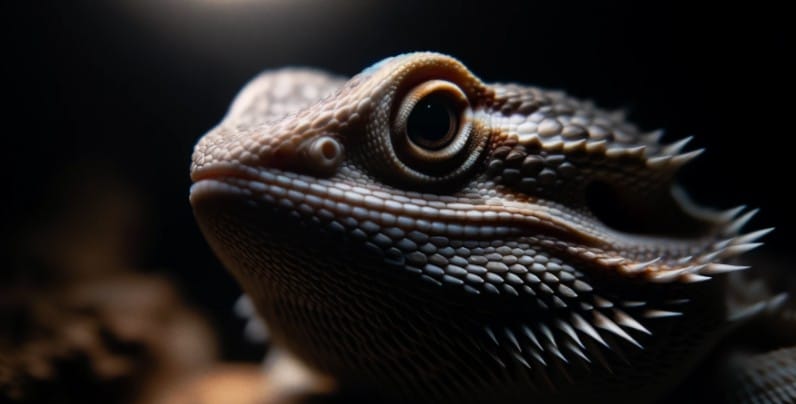
Bearded dragons do not require light during nighttime hours. In their natural habitat, these reptiles experience long, hot days followed by cooler, dark nights. It’s essential to replicate this day-night cycle in captivity to maintain their health and well-being.
Continuous exposure to light at night can disrupt their circadian rhythm, leading to stress and potential health issues. A proper sleep cycle is vital for these creatures, as it aids in bodily repairs, hormonal production, and overall rejuvenation.
While some might believe that bearded dragons are nocturnal or crepuscular, they are, in fact, diurnal, meaning they are active during the day and rest at night.
To ensure their well-being, it’s recommended to provide them with 12 to 14 hours of daylight and roughly 12 hours of darkness. If there’s a concern about nighttime temperatures dropping too low, it’s advisable to use ceramic heat-emitting bulbs or heating pads, which provide warmth without light, rather than leaving the lights on.
What’s the best lighting for a bearded dragon?
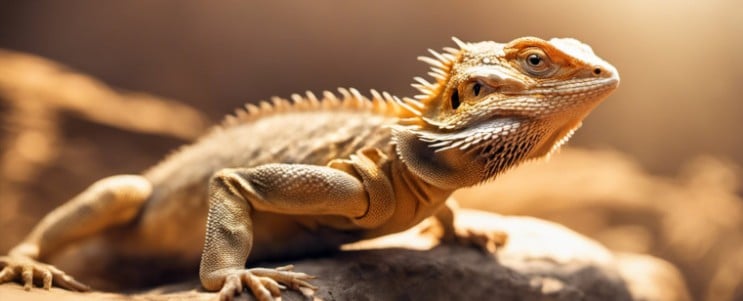
The best lighting for a bearded dragon is a combination of a heat lamp and a UVB lamp.
For the heat lamp, you can use a basking bulb or a ceramic heat emitter to provide warmth for your bearded dragon.
The wattage of the bulb will depend on the size of your enclosure, but you should aim to provide a basking spot where the temperature ranges from 95-105°F (35-40°C) during the day.
For the UVB lamp, you should use a fluorescent bulb that provides 10-12% UVB. The bulb should be placed inside the enclosure and replaced every 6-12 months, depending on the manufacturer’s recommendations.
Remember that the lamps’ placement is crucial for your bearded dragon’s health. The heat lamp should be placed at one end of the enclosure to create a basking spot, while the UVB lamp should be placed on the other end to provide a gradient of light and heat.
This will allow your bearded dragon to regulate their body temperature and receive the necessary UVB exposure.
How long should a bearded dragon have UVB light for?
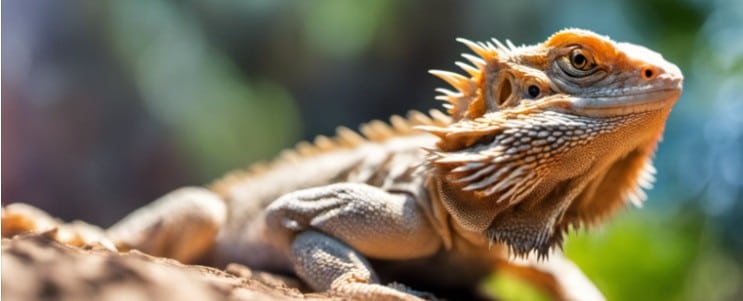
Bearded dragons require UVB lighting to help them produce vitamin D3, which is essential for their bone health. UVB lighting should be provided for 10-12 hours a day, and the bulb should be replaced every 6-12 months.
It is important to note that UVB lighting cannot penetrate glass, so it should be placed inside the enclosure.
How close should the basking light be to your bearded dragon?
The distance between the basking light and your bearded dragon is crucial for its health and well-being. Ideally, the basking light should be positioned about 6 inches from where the dragon primarily lays. However, the most important factor is the temperature of the basking spot. It should be around 40-42°C (104-107.6°F), and this can be accurately measured using a temperature gun.
Bearded dragons are adept at thermoregulating, meaning they will move closer or farther from the light as needed to adjust their body temperature. It’s also essential to ensure that there’s a UVB light source nearby, as UVB is vital for their health.
If you’re unsure about the lighting setup, it’s recommended to use digital thermometers and consult with experts or join reptile lighting groups where professionals can provide guidance. Proper positioning of the basking light ensures that your dragon doesn’t suffer from thermal burns and receives the right amount of heat and UVB exposure.
What is the best-bearded dragon UVB light setup?
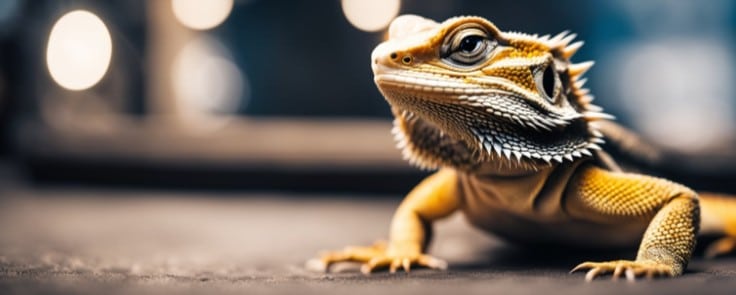
When selecting a UVB light for your bearded dragon, it’s crucial to choose a bulb that closely replicates natural sunlight, especially within the UV spectrum. Not all UV lamps are created equal, so relying solely on the advertised output (like 10% or 12%) isn’t the right approach.
Instead, using a UV meter to measure the “UV Index” is recommended. Research indicates that a UV Index of 4-6 is ideal for bearded dragons in captivity.
One of the top-recommended UVB lighting products is the Arcadia T5 lighting range. These high-output linear tubes offer a bright, natural, and safe level of ultraviolet and visible light. The Arcadia ProT5 kit is especially popular as it comes with a tube, reflector, and controller, making it an affordable and easy-to-install option.
Placement of the UV light is also crucial. Brighter, more powerful lamps should be positioned further away from the bearded dragon to ensure a safer, more natural UV provision.
The lamp should ideally be installed on the ceiling of the vivarium, with a basking area built up from the floor using decorations. This setup allows the bearded dragon to access the lamp at the optimal distance.
The size of your vivarium and the basking distance are significant factors when choosing your UV light. Typically, the lamp should be around 60-80% of the vivarium’s length and positioned towards the warmer end. For instance, the Arcadia 39w 12% ProT5 is recommended for a vivarium size of 120x60x60cm.
Bearded dragon light schedule
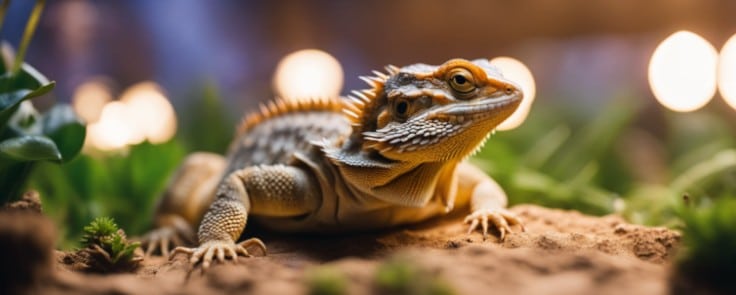
Bearded dragons require a specific light schedule to mimic their natural environment and ensure their health. They need 12-14 hours of UVB and heat exposure daily, closely resembling their natural habitat.
This lighting aids in vitamin D3 synthesis, which is vital for calcium absorption. It’s essential to use the right type of bulbs, typically fluorescent or mercury vapor, and avoid coiled or compact bulbs, which can be harmful.
At night, bearded dragons do not require any lighting; in fact, any light can disrupt their natural sleep cycle.
If temperatures drop below 65 degrees Fahrenheit at night, a Ceramic Heat Emitter (CHE) can be used to provide warmth without light. Regularly monitoring and adjusting the lighting schedule, especially during winter months or brumation periods, ensures the well-being of the bearded dragon.
Understanding bearded dragon lighting
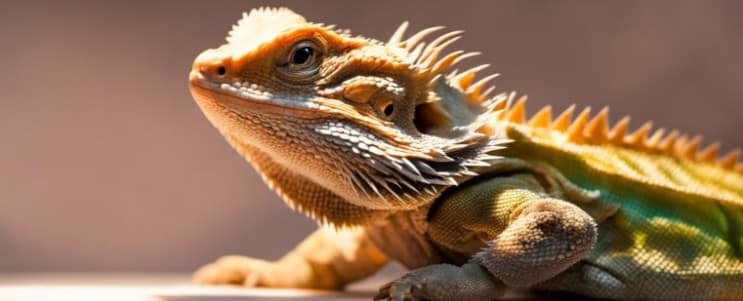
Bearded dragons are popular pets known for their docile nature and unique appearance. However, to keep them healthy and happy, providing them with the appropriate lighting is essential.
Basking lighting
Bearded dragons also require a basking light to provide them with the heat they need to regulate their body temperature.
The basking light should be placed at one end of the enclosure and should provide a temperature of 100-110°F. This light should be turned off at night to allow the bearded dragon to cool down.
The importance of proper lighting
Proper lighting is crucial for the health and well-being of bearded dragons. In the wild, these reptiles bask in the sun for hours, soaking up UVB rays that help them produce vitamin D3 and regulate their calcium levels.
Without adequate lighting, bearded dragons may suffer from a range of health problems, including metabolic bone disease, poor digestion, and loss of appetite.
Regarding lighting for bearded dragons, there are two main bulbs to consider: UVB and basking bulbs.
UVB bulbs emit ultraviolet light that helps bearded dragons produce vitamin D3. Basking bulbs provide heat and light for bearded dragons to bask under. Both types of bulbs are important for bearded dragons, but UVB bulbs are especially crucial for their health.
Bearded dragons require UVB lighting for proper digestion, metabolism, and calcium absorption.
Without UVB light, they may not be able to properly digest their food, leading to a range of digestive problems. They may also suffer from metabolic bone disease, a condition where their bones become weak and brittle due to a lack of calcium absorption.
To ensure that bearded dragons receive adequate UVB lighting, choosing the right bulb and replacing it every six to twelve months is important.
Bearded dragons also require a basking spot with a temperature of around 95-105°F to properly digest their food and regulate their body temperature.
Types of lights and their roles
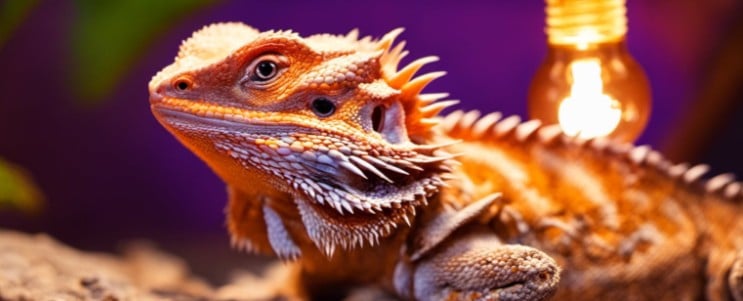
We have five types of lights for these adorable creatures, which are important to create an ideal living environment. Let’s explore them.
Basking lights
Basking lights are essential for bearded dragons as they help to regulate their body temperature.
These lights emit heat and light and should be placed above a basking spot within the enclosure. Basking lights should be used for 10-12 hours per day and should be turned off at night.
UVB lights
UVB lights are important for bearded dragons as they help produce vitamin D3, essential for calcium absorption. These lights should be used for 10-12 hours per day and should be replaced every 6-12 months as they lose their effectiveness over time.
UVA lights
UVA lights are not essential for bearded dragons, but they do help to simulate natural sunlight and can improve the overall well-being of the animal. UVA lights should be used for 10-12 hours per day.
Night lights
Night lights are not necessary for bearded dragons, as they require a period of darkness to sleep.
However, if additional lighting is needed for viewing, red or blue light can be used as these colors do not disrupt the dragon’s sleep cycle.
Heat lamps
Heat lamps are necessary for bearded dragons as they provide additional heat to the enclosure.
These lamps should be used in conjunction with a basking light and should be turned off at night.
Heat lamps come in various wattages, and the appropriate wattage should be chosen based on the size of the enclosure and the dragon’s needs.
Choosing the right bulbs
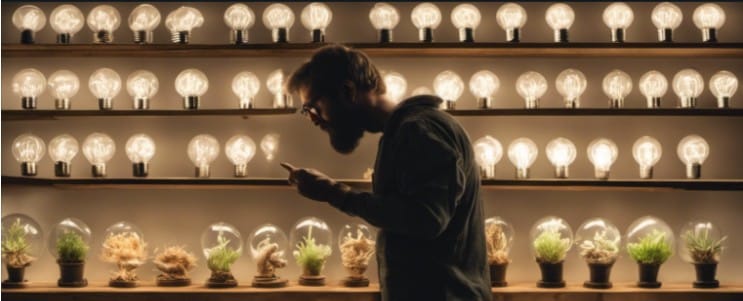
When it comes to providing adequate lighting for bearded dragons, choosing the right bulbs is crucial. There are a variety of bulb options available, each with its own advantages and disadvantages.
Here are some of the most common types of bulbs used for bearded dragon lighting:
Halogen bulbs
Halogen bulbs are a popular choice for bearded dragon lighting due to their high heat output and UVB radiation. They emit a bright, white light that mimics natural sunlight and can help promote healthy activity levels in bearded dragons. However, they can be expensive and require frequent replacement.
Fluorescent bulbs
Fluorescent bulbs are a cost-effective option for bearded dragon lighting. They emit UVB radiation and can help prevent metabolic bone disease in bearded dragons.
They also have a longer lifespan than halogen bulbs and are available in a variety of sizes and strengths. However, they do not emit heat and may require additional heating sources.
Incandescent bulbs
Incandescent bulbs are a common choice for providing heat in bearded dragon enclosures. They emit a warm, yellow light and can help maintain proper temperatures in the enclosure.
However, they do not emit UVB radiation and may need to be paired with other bulbs to provide adequate lighting.
Mercury vapor bulbs
Mercury vapor bulbs are a popular choice for bearded dragon lighting as they emit both UVB radiation and heat.
They provide a full spectrum of light that mimics natural sunlight and can help promote healthy activity levels in bearded dragons. However, they can be expensive and may not be suitable for smaller enclosures.
Ceramic heat emitters
Ceramic heat emitters (CHE) are a popular choice for providing heat in bearded dragon enclosures.
They emit infrared heat and can help maintain proper temperatures in the enclosure. They also have a longer lifespan than incandescent bulbs and do not emit light, making them ideal for use at night.
However, they do not emit UVB radiation and may need to be paired with other bulbs to provide adequate lighting.
Setting up the lighting
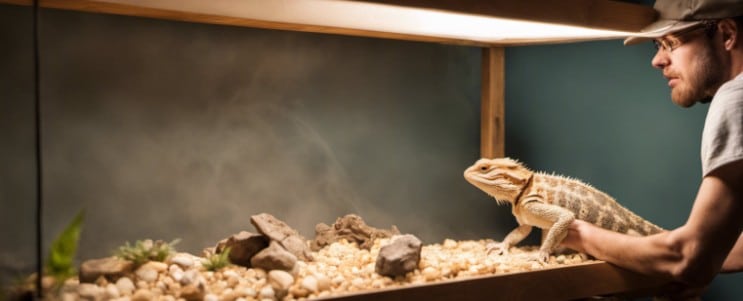
When setting up the lighting for a bearded dragon, there are several factors to consider. A proper lighting setup is essential for the health and well-being of your pet, as it provides the necessary UVB radiation and heat for proper digestion and metabolism.
In this section, we will cover the basics of setting up the lighting for your bearded dragon, including tank setup, temperature gradient setup, and bulb placement.
Tank setup
First and foremost, it is important to ensure that your bearded dragon’s tank is set up properly. The tank should be large enough to provide ample space for your pet to move around and bask in the light.
A good rule of thumb is to provide at least 40 gallons of space for a single adult bearded dragon.
The tank should also be equipped with a substrate that is safe for your pet, such as reptile carpet or paper towels.
Avoid using sand or loose substrates, as these can be ingested and cause impaction.
Temperature gradient setup
Bearded dragons require a temperature gradient within their tank to regulate their body temperature. This means that one side of the tank should be warmer than the other, allowing your pet to move between different temperature zones as needed.
To create a temperature gradient, you will need to provide a basking spot where your bearded dragon can soak up heat and UVB radiation.
This can be achieved with a basking bulb or ceramic heat emitter, placed on one side of the tank. The temperature at the basking spot should be around 100-110°F.
On the other side of the tank, you will need to provide a cooler area where your pet can retreat to regulate its body temperature.
This can be achieved with a lower-wattage bulb or by simply placing the heat source on the opposite side of the tank.
Bulb placement
Proper bulb placement is crucial for a bearded dragon’s health and well-being. UVB radiation is necessary for your pet to metabolize calcium, which is essential for strong bones and overall health.
To provide adequate UVB radiation, you will need to place a UVB bulb over the basking spot. This bulb should be replaced every 6-12 months, as the UVB output will decrease over time.
It is also important to ensure that the bulb is not too far from your pet. A good rule of thumb is to provide a distance of around 10-12 inches between the bulb and your bearded dragon.
Maintaining the lighting system
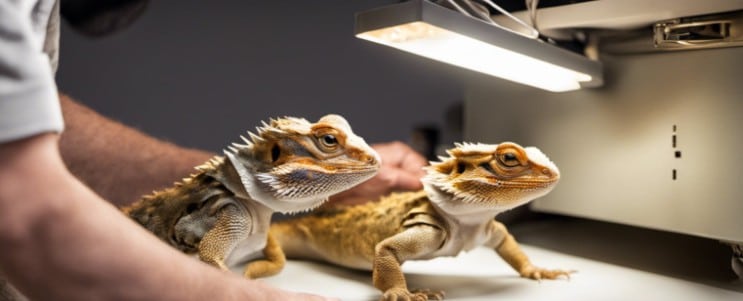
Once you have set up your bearded dragon’s lighting system, it is important to maintain it. This includes changing bulbs every 6-12 months and inspecting the enclosure periodically for any damage or malfunctioning equipment.
Here are some of the key steps to take when maintaining your bearded dragon’s lighting system:
When to replace bulbs
Regularly replacing the bulbs in a bearded dragon’s lighting system is crucial to ensure that the system continues to function effectively.
Over time, the bulbs will begin to lose their intensity, which can lead to inadequate heat and light for the bearded dragon.
To determine when to replace the bulbs, it is important to monitor the light’s intensity and the basking spot’s temperature.
If the basking spot is not reaching the desired temperature or the light is noticeably dimmer, it may be time to replace the bulbs.
It is also important to keep track of when the bulbs were last replaced to ensure they are only being used within their recommended lifespan.
Monitoring temperatures
In addition to regularly replacing bulbs, monitoring the temperature of the basking spot is crucial for the health of the bearded dragon.
Use a thermometer to ensure that the basking spot is reaching the appropriate temperature range of 100-110°F.
If the temperature is too low, it may be necessary to adjust the wattage of the bulb or the distance between the bulb and the basking spot. If the temperature is too high, it may be necessary to adjust the distance between the bulb and the basking spot or use a lower-wattage bulb.
That said, keep in mind that the type of bulb and fixture used can also impact the temperature of the basking spot.
T5 fixtures typically produce more heat than T8 fixtures, so it may be necessary to adjust the distance between the bulb and the basking spot accordingly.
Summary
Before we move on to the conclusion, we’ve summarized this article into a short list of key points for you to remember:
- Bearded dragons require two types of lighting: heat lamps and UVB lamps.
- Red lights should not be used as a primary source of heat or UVB for bearded dragons.
- Bearded dragons require UVB lighting for proper digestion, metabolism, and calcium absorption.
- Choosing the right bulbs is crucial for providing adequate lighting for bearded dragons.
Final thoughts
The lighting system for a bearded dragon is an important element of their habitat. Regularly replacing the bulbs and monitoring the temperatures of the basking spot is crucial for the health and well-being of your bearded dragon.
With these tips in mind, you can create a habitat that is both safe and comfortable for your pet.
Thanks for reading, and have a great day!
Want to learn more about bearded dragons?
Ready to boost your knowledge to the next level? If so, check out the articles below:
- 9 Ways How to Tell If a Bearded Dragon is Scared (Solved)
- What Bugs Can a Bearded Dragon Eat? ( 7 Must-Have Bugs)
- Coconut Oil on Bearded Dragons: Why, When, and How to Use It ([year])


